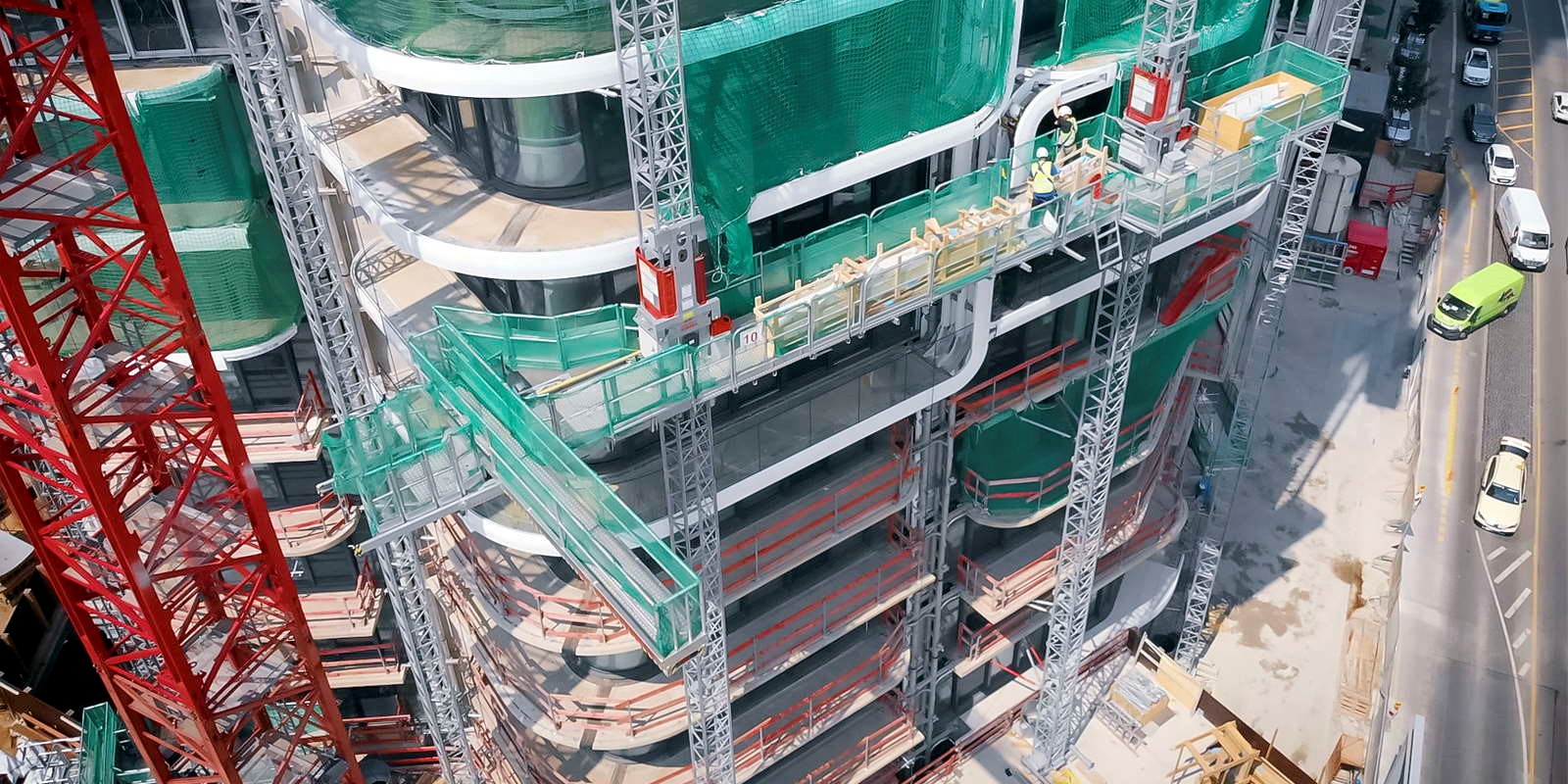Solving Construction Challenges: Mast Climbing Work Platforms

For a long time, when we thought of construction scaffolding, we imagined a system that helped workers reach great heights quickly. However, the reality often fell short of this ideal. The numerous ties required for safety and stability made the setup more time-consuming than expected. Additionally, constant adjustments to meet specific project needs only added to the setup time. Integrating Tube and Fitting scaffolding for compliance further complicated matters. All of these factors combined to significantly extend project timelines, leading to construction delays and potential issues.
Enter the Game-Changer: Mast Climbing Work Platforms
Mast climbing work platforms (MCWP) have emerged as a game-changer in the construction industry, offering a revolutionary solution to the challenges posed by traditional scaffolding systems. These platforms are known for their swift assembly and disassembly, needing only a minimal number of ties for attachment, making them more efficient and versatile.
Companies are increasingly turning to mast climbers for three key reasons:
- Safer and Healthier Working Conditions: Mast climbers stand out for their ability to evenly distribute loads across the platform. This eliminates heavy lifting, bending, and awkward positions that can lead to worker injuries and health problems. The ergonomic design ensures that workers can operate at the ideal height without straining their bodies, reducing the risk of musculoskeletal issues.
- Increased Efficiency and Productivity: In contrast to traditional scaffolding, mast climbers can be set up in just a few days, allowing projects to start and finish quickly. For example, a 12 to 14-story building, which typically takes 30 days to scaffold, can now be assembled and disassembled in only 4-5 days, providing valuable extra time for increased productivity. A survey of masonry contractors using mast climbers showed that increased productivity was the most significant advantage (70%) and substantial time savings (over 60%).
- Versatility and Adaptability: Mast climbers are suitable for a wide range of construction and maintenance projects, from high-rise buildings to smaller renovations, even those with curved facades and round corners. APEL has demonstrated the adaptability of mast climbers by successfully completing a completely circular structure project. Various types of MCWPs can be adjusted to fit the specific needs of a project, including the height, length, and width of the platform.
- Improved Accessibility: Mast climbing work platforms provide workers with closer access to the work area, enhancing visibility and task efficiency. They eliminate the cumbersome process of maneuvering through scaffold trusses when installing large panels, ultimately resulting in improved work quality and faster completion times.
- Reducing Heavy Lifting: Mast climbers enhance efficiency and improve worker safety by eliminating uncomfortable bending or precarious tiptoeing while working. They make material handling in high-rise projects easier by lowering the platform to the ground, reducing the risks associated with heavy lifting and potential injuries. Compared to mast climbers, scaffolds have a higher risk of falls due to their instability and lack of a secure workspace. Approximately 40% of all fall injuries at construction sites are caused by scaffolding and ladder accidents.In conclusion, the rise of Mast Climbing Work Platforms as an alternative to system scaffolding is reshaping the construction and maintenance landscape in India. With enhanced safety, efficiency, versatility, and accessibility, MCWPs offer a compelling solution for companies looking to stay ahead in an industry where every moment counts. As the construction sector continues to evolve, APEL's leading rental services of Scanclimber MCWPs are undoubtedly at the forefront of this exciting revolution.